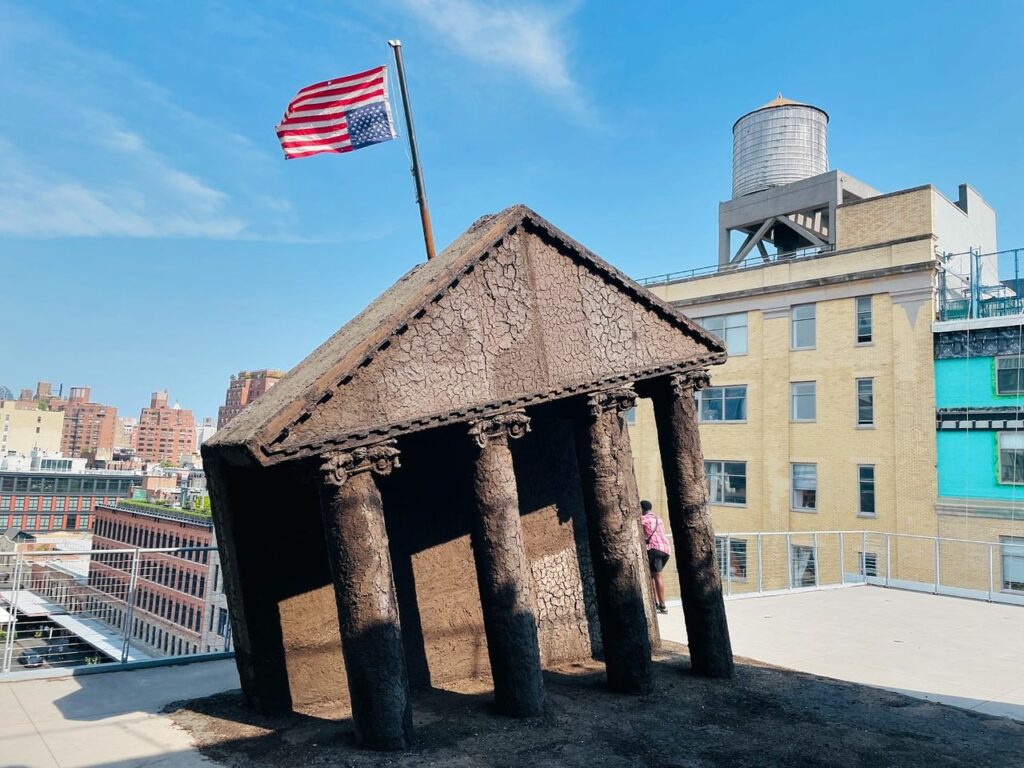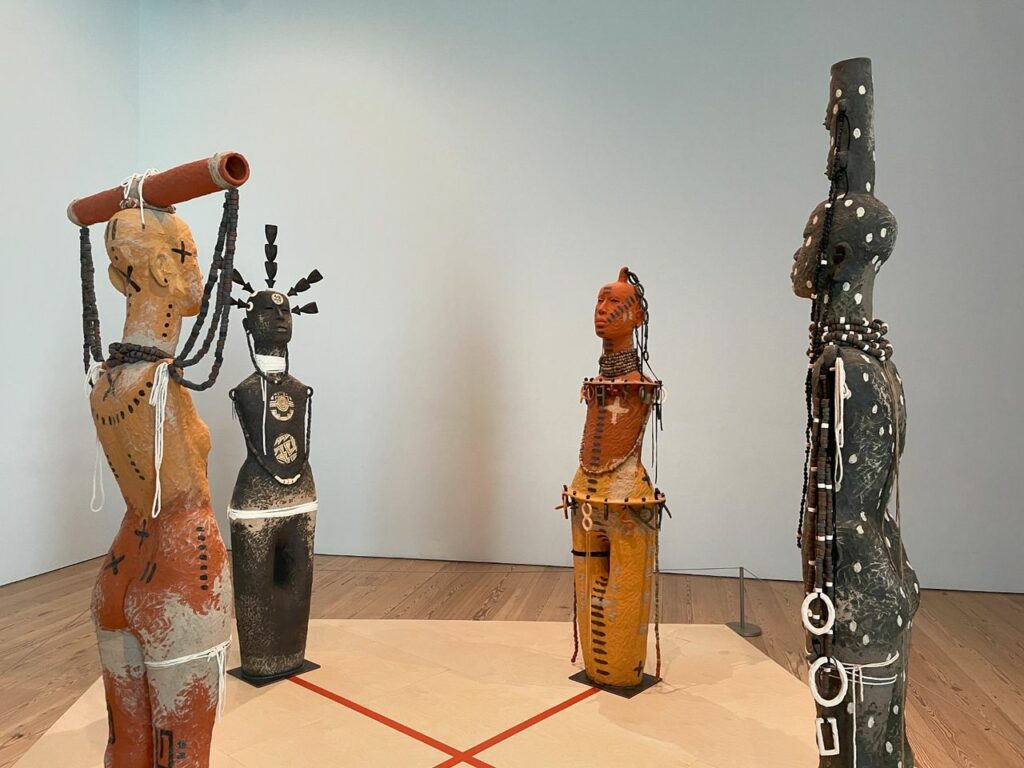frank melville memorial park never disappoints. fall – comforting, mellow <3



it’s been a busy weekend. with the premiere of ‘being black in america’ by @voicesproj @jackiephotographyroc at the voices rising film festival @lovewinsfilms in islip on saturday and a lovely get together/lunch at our house followed by a walk at the beach with our rochester fam on sunday. so good to see u @jackiemcgriff @bycocoarae and @taurussavant

my artwork was exhibited for the first time in new york city, at ideal glass studios in the west village – a digital collage i created in concert with my short film, return to sender: women of color in colonial postcards & the politics of representation. i was one of 20 artists whose work was selected. the opening was last night and it was spectacular. met some wonderful people. am thankful to @tenten.nyc for showcasing my work and hope to collab more:)


downtime and karaoke with friends last night and a meeting organized by @phototrouveemagazine where we got to meet in nyc and exchange photos today. a much needed break <3

So proud to attend the opening of my friend Safia’s photography exhibition at the Glen Cove Public Library yesterday! Here is more about her brilliant project:
“Living Water for Women is a halfway house located in Glen Cove, NY that fosters growth and independence for formerly incarcerated women to overcome their addictions. In 2016 l established biweekly art workshops at the home. At each session we use art as means of communication and expression. In this process, stories are shared, tears are often shed, and an important community has been created. These women are often shunned and forgotten by their families, friends, and society. They have important stories to share to help those who might also be struggling with addiction, mental health issues, and jobs. By combining portraits with transcribed interviews, I hope to both empower these women and raise awareness about addiction.“

so happy to attend my friend rene bouchard’s ‘dialogue: a personal exploration of trauma related dissociation through song’ at @industrymakers, a fantastic space for the arts in huntington, new york. rene writes songs and music, creates short films and animated collages, produces gorgeous artwork, and has the courage to talk about complex post traumatic stress disorder openly and visibly. brava rene <3

3 more artists from the Whitney Biennial that I loved. The last artist in particular has truly moved me to think about our current apocalyptic times in a different way by subverting colonial language and the limited, dismal visions it embodies.
Kiyan Williams, born 1991 in Newark, NJ: In Williams’s outdoor sculpture Ruins of Empire /I or The Earth Swallows the Master’s House, the north facade of the White House, which is composed of earth, leans on one side and sinks into the floor… The labor history embedded in the dirt points to a fragility in our political foundations, while the earth’s erosion embodies a critique of institutionality at a moment when institutions are toppling.
Rose B. Simpson, born 1983, Santa Fe, NM: In Rose B. Simpson’s Daughters: Reverence, four figures gaze at one another, creating a kind of force field of protection and solidarity that stands in contrast to an unstable world. “My lifework,” Simpson has explained, “is a seeking out of tools to use to heal the damages I have experienced as a human being of our postmodern and postcolonial era-objectification, stereotyping, and the disempowering detachment of our creative selves through the ease of modern technology.”
Demian Diné Yazhi’, born 1983 in Gallup, NM, we must stop imagining apocalypse/genocide + we must imagine liberation, 2024: As a poet and activist, Dine Yazhi’ has thought about how to use a colonizer’s language against colonialism, noting that they “want to see more poetry at protests.” Written in red neon, the text in this work emerges from the artist’s reflections on Indigenous resistance movements. Diné Yazhi calls on people working toward liberation to avoid predicting futures rooted in a Euro-Western “romanticization and addiction with apocalypse,” speculating that accepting catastrophe as a given leads to “writing our own demise or prisons.” Instead, they advocate for writing stories of liberation, finding alternate ways to work through oppressive moments as a collective.


So I went to the Whitney Biennial in NY and what I liked most was the work of Indigenous/ Asian/ South American artists. Here are some examples
-Cannupa Hanska Luger born 1979, Standing Rock, ND: “This installation is not inverted… our current world is upside down.” For the artist, upending our grounding in time and space makes way for imagined futures free of colonialism and capitalism, where broader Indigenous knowledge can thrive.
-Takako Yamaguchi, born 1952 in Okayama, Japan: Her recent seascapes use meticulously rendered zigzags, tubes, and lines to suggest weather and other natural elements. They reflect Yamaguchi’s experimentation with what she calls “abstraction in reverse,” or taking recognizable forms, like clouds or waves, and abstracting them to the point of pattern.
-Clarissa Tossin, born 1973 in Porto Alegre, Brazil: Clarissa Tossin’s film appears alongside 3D-printed replicas of pre-Columbian Maya wind instruments. Tossin had the replicas made so that they could be played in the film, which traces the movement of Maya people and culture across multiple spaces and temporalities, real and imagined, cosmological and colonized. The fact that the ancient instruments are not available for use-isolated from their original context and kept behind glass in museum collections-can be seen as a distillation of the themes of dislocation and tradition that Tossin works to reconcile in the film. Featuring the Kiche ‘Kaqchiquel poet Rosa Chávez and the Ixil Maya artist Tohil Fidel Brito Bernal, the film looks at ways in which contemporary Maya culture is activated by means of both reclamation and re-creation.
More in next post :))


on june 22nd, 6-9pm, attend a gaza fundraiser in brooklyn organized by global feminists for palestine, AAWW and SAWCC at XENANA PROJECTS, 154 scott avenue, #317 in brooklyn. suheir hammad will be in the house! more on how to bid on this beautiful artwork by jaishri abichandani and buy tickets to the fundraiser here.

Went to see Ibsen’s An Enemy of the People at the Circle in the Square in NY last Sunday – a Broadway revival directed by Sam Gold, w Jeremy Strong and Michael Imperioli.
The stage is long and narrow, surrounded by audience members, lit by oil lamps, with various scenes taking place at different ends. It’s the late 1800s, we are in a Norwegian coastal town. The tone is set in the beginning, with actors singing Norwegian folk songs.
Jeremy Strong plays the protagonist, Dr Stockmann, w warmth and intensity. As my daughter said, the ensemble comes to life as soon as he steps on stage. He radiates sincerity.
The story is well-known. The economy and future of the town are intertwined with its recently opened Baths, which are meant to transform it into a health resort. Stockmann discovers that the waters are contaminated and his brother, the Mayor, goes to work doing everything he can to suppress his brother’s report and turn the townspeople against his “theories” which will destroy local businesses.
Stockmann is a typical Ibsen anti-hero – upright and courageous, yet also deeply flawed. There is a brief detour into eugenics and part of Stockmann’s crusade for the truth is activated by his arrogance, but Jeremy Strong endows him with vulnerability and earnestness, and breaks our hearts when the doctor is attacked and humiliated.
The parallels with our present reality cannot be overstated. As people are targeted, fired, silenced, and turned into pariahs for speaking the truth about settler colonialism and genocide in Palestine, we are seeing the same kind of crucifixions by ideological mobs.
I loved Strong’s performance in Succession, where he finessed his role into a complex Shakespearean character. Film is polished and controlled, whereas theater is raw, visceral, unfinished. Strong is absolutely brilliant. The end of the play is abrupt, and he was visibly shaken – still trying to sort his emotions as he took the final bow.
Amy Herzog’s adaptation is a seamless update of Ibsen’s language, a trimming down of the story and characters, and apt humor. After being pilloried by the townspeople, Stockmann thinks about moving to the US: “This could never happen in America.” Prolonged, raucous laughter from the audience.
Set design and direction are inventive, with a light touch. The town hall scene begins with a bar descending from the grid, serving Norwegian Linie with music by A-ha. Audience members gathered on stage to get drinks but then the actors appear and the town hall begins right in that setting. A fantastic crossing over of time and geography. This is what theater should be – unexpected, exhilarating, moving.
